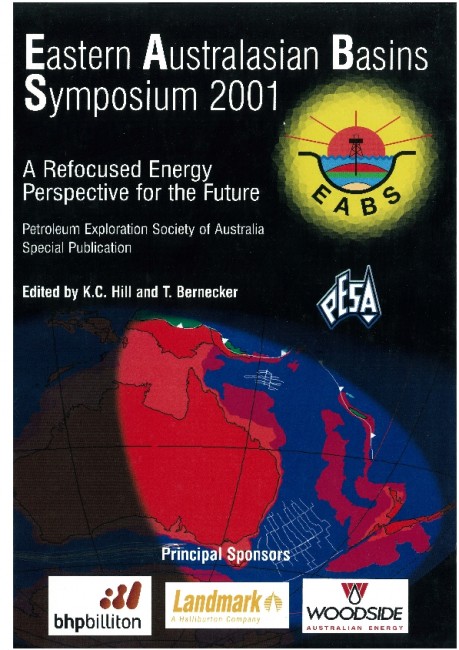Publication Name: Eastern Australian Basins Symposium 2001
Authors: H. Zwingmann, P.R. Tingate, N.M. Lemon and P.J. Hamilton
Date Published: November 2001
Number of Pages: 30
Reference Type: Magazine Article
Abstract:
Petrographic observations of Late Carboniferous and Early Permian sandstones of the Cooper Basin in South Australia indicate illite to be present in abundance. It occurs with different morphologies comprising detrital grains, authigenic grains with pore bridging filamentous habit and tightly packed arrangements of plates within altered volcanic clasts. K-Ar dates of illite separates from different stratigraphic units, depths and grain sizes range from 390 ? 5 to 89 ? I Ma (n = 46). The dates obtained are variously interpreted as:1. predepositional age of detrital illite;
2. the time at which neoformed illite ceased to grow;
3. the timing of alteration of volcanic clasts; and
4. having no geological meaning where more than one illite type has been sampled, the illite separate is ontaminated with detrital K-feldspar or K-Ar isotope systematics have been partially reset during deep burial and high temperatures.
The youngest dates obtained for fine-grained, neoformed, filamentous illite separates at -90-94 Ma are interpreted as approximating the time at which growth of this illite ceased. This time is coincident with the
modeled time for maximum burial and with timing of major hydrocarbon expulsion.
Fine-grained illites from the altered volcanic clasts yield dates of -200 Ma, close to the timing of a major unconformity positioned between the Cooper and the overlying Eromanga Basin. This could represent the timing of alteration in response to meteoric flushing subsequent to the uplift and erosion represented by the unconformity.
In one deep well that has experienced a high maximum burial temperature (>300?C), the detrital illite date of -230 Ma reflects a partial resetting of the K-Ar systematics.


